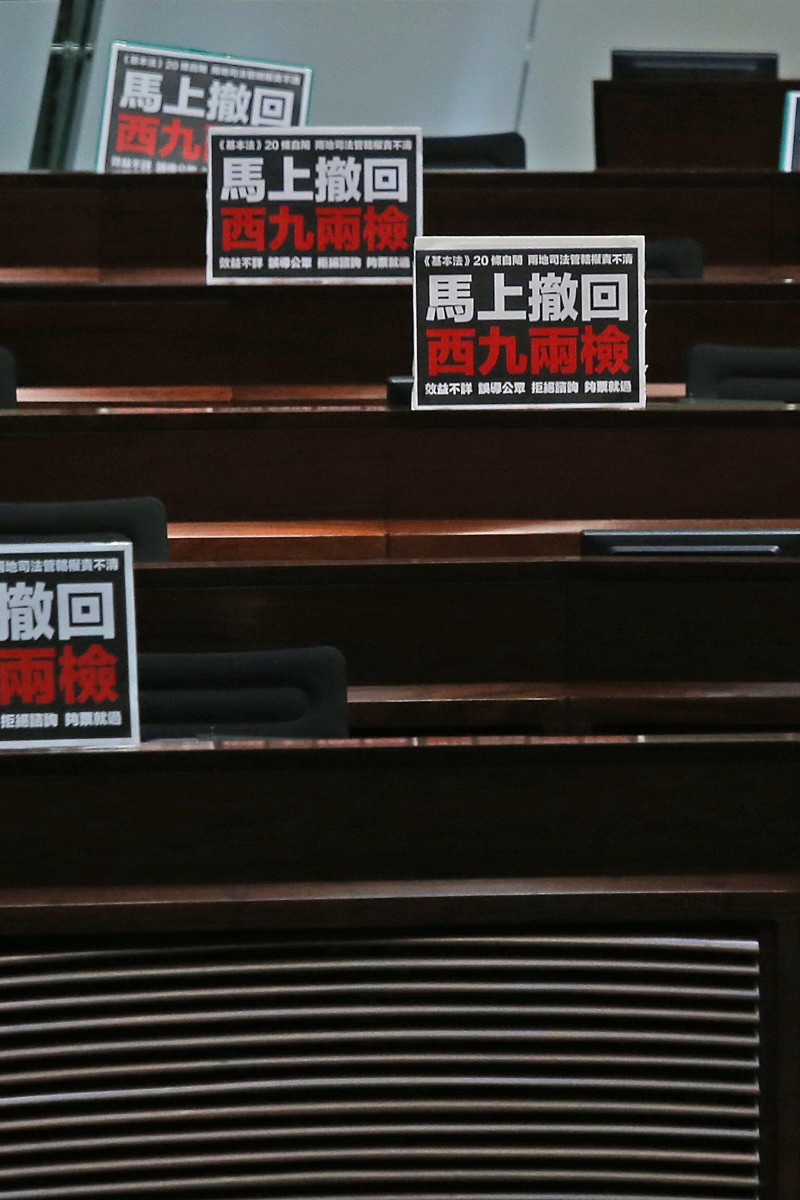
No one is on board with the Hong Kong-mainland joint checkpoint
 The arrangement in West Kowloon is harshly opposed by the Legco opposition.
The arrangement in West Kowloon is harshly opposed by the Legco opposition.The Hong Kong-China joint checkpoint deal for the high-speed rail link to Guangzhou has stirred quite a fuss among nervous Hongkongers. The so-called “co-location” arrangement would mean the mainland police, immigration, customs and quarantine personnel operating in the West Kowloon terminal.
Unlike the existing Shenzhen Bay Port where travellers complete all customs clearance at the Hong Kong-Shenzhen border, West Kowloon terminal is in the heart of our city.
Pro-government individuals have pointed towards the US border pre-clearance arrangement as a parallel. Travellers leaving for the US from countries such as Ireland or Canada may pass through US immigration before boarding their flights, which effectively allows them two checkpoints at one location.
This analogy, however, is not accurate. Unlike the arrangement at West Kowloon terminal, where mainland officers will enforce national laws, including those for criminal offences, in port areas, Americans do not have the power to arrest someone before their departure, and individuals remain under the jurisdiction of the host country. US officials on foreign soil are only from the Customs and Border Protection department and are not armed.
Hence, some fear that the “co-location” arrangement in West Kowloon would become the first of many “designated zones”, where the enforcement of national laws would be allowed on Hong Kong soil. This seems unlikely, because the legal basis as to whether Hong Kong has the authority to lease land or surrender jurisdiction to China remains muddy. Beijing’s intention was not to create “areas of national jurisdiction” in Hong Kong to expand its rule, but to showcase the country’s strength and unity by linking up all the provinces and major cities. This is also why Taipei was included under Beijing’s unilateral announcement of a Beijing-Taipei high-speed rail corridor, which has only been partially completed so far. The rail link connects Beijing and Fuzhou, and is unlikely to be ever finished.
All these point to the unprecedented move, which led to the creation of a mainland port area inside the West Kowloon terminal, being an isolating episode, for the time being at least. Yet, truth be told, if mainland officials feel the urge to operate within Hong Kong, the disappearance of Hong Kong bookseller Lee Bo tells us that a “demarcation” won’t make any difference.
The Guangzhou-Shenzhen-Hong Kong Express Rail Link has been plagued by problems. The cross-border arrangement is merely one of its litany of woes, which includes high construction costs, corruption allegations and the displacement of Choi Yuen Tsuen residents. As a largely symbolic – and divisive – project, it would have been much better to be advertised as a political mission funded by our Central Government instead.